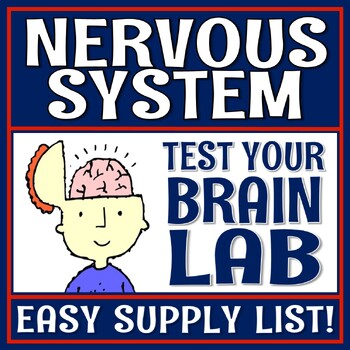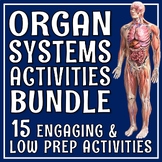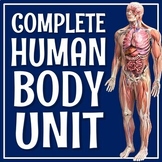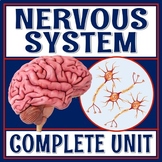Human Body Organ Systems Nervous System Activity for Brain MS-LS1-3 MS-LS1-8
- PDF
- Google Apps™

What educators are saying
Also included in
- SAVE $20 off list prices! Includes human body systems activities that are easy on the teacher and fun for kids! Includes 15 FUN, fresh, and thoroughly engaging anatomy activities to supplement your Human Body Systems unit. Teachers will appreciate these resources because:The included lessons are hPrice $39.99Original Price $60.92Save $20.93
- Never search for "something to do tomorrow" ever again! This bundle contains PRINT AND GO lessons, NO PREP activities, LOW PREP labs, and ENGAGING articles to supplement and thoroughly enhance a life science course. Every included resource is easy to implement, standards-based, and high-quality.Price $399.99Original Price $750.85Save $350.86
- SAVE OVER 40% off list prices! This is a complete ACTIVITY-BASED Organ Systems lesson unit. This bundle includes every resource I use to teach and assess NGSS MS-LS1-3. All of the work has been done for you - from start to finish! An included unit plan tells you what to teach and when, so you don'Price $109.00Original Price $186.36Save $77.36
- SAVE OVER 30%! These resources are a DONE FOR YOU solution to teaching the nervous system! Includes FUN and ENGAGING activities, an introductory presentation in both PPT and Google Slides, and a final check-in quiz.This Bundle Includes:✅ Presentation (with Cloze notes) to introduce the nervous sysPrice $12.99Original Price $18.98Save $5.99
Description
This brain investigation lets students "play" with their brains! Student favorite!
⭐ Find this resource in our Nervous System Unit!
In this activity, students will:
- "Test" and investigate 14 different parts of their brains (including several cranial nerves) by following some simple step-by-step instructions.
- Answer questions on a corresponding worksheet.
Page 1 + 2 are instructions (Save time - make one class set and reuse over and over!)
Page 3 + 4 are the student response pages.
The supply list is extremely easy - I promise! You'll need some simple and very easy-to-find materials such as pipe cleaners and straws. You'll also need to assemble some small containers with things to shake (pennies, pebbles - whatever you have on hand), and small containers of things to smell (vinegar, coffee - again, whatever you have on hand).
⭐ Need an EASY and NO PREP way to teach the nervous system?
⭐ Try our Nervous System Information Stations!
Related NGSS Standards:
- NGSS MS-LS1-3 and MS-LS1-8
- NGSS Science & Engineering Practice: Planning and carrying out investigations
More Fun with the Nervous System:
Please note: This resource is NOT editable.
Includes both a PDF and a Google Slides version.
⭐This resource is offered at a discount in our COMPLETE UNIT for this topic!
⭐Includes everything you need to TEACH and ASSESS Human Body Systems!









